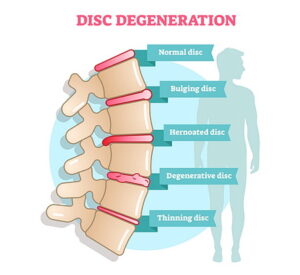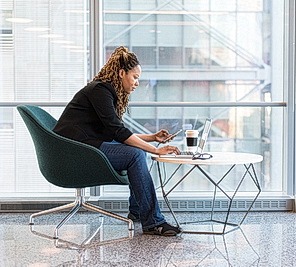
If you’re reading this, you or someone you care about has likely experienced back pain. According to goodbody.com, as many as 540 million people suffer from one type of back pain or another.
It is one of the most common reasons for doctor visits and missed workdays. Fortunately, there are a variety of ways to reduce your risk of experiencing back pain. This blog post will explore the various causes of back pain. If you’d like to know some preventative techniques and management of back pain, please check out our article on What to Do About Back Pain.
What is the Most Common Cause of Back Pain?
Our muscles rely on a network of nerves that travel through them to deliver signals to the brain. When these nerves are overstretched, as can happen with muscle strains, they can get pinched and cause pain.
Disc problems, technically called intervertebral discs, are another common cause of back pain. The discs that cushion the vertebra in the spine are prone to wear and tear as we age, which increases the risk of the disc rupturing.
They is made up of a gel-like substance, and if the pressure within the disc becomes too great, it will rupture and the gel will leak out. The disc can then press against the surrounding nerves, which will then send pain signals to your brain.
These discs located in the lumbar region of the lower spine are particularly prone to herniation, otherwise known as herniated discs. This is not only the most common cause of back pain in this part of the spine, but it is also the leading cause of sciatica (see below).
Disc Problems

Intervertebral discs are soft, spongy pads made of a gelatinous substance called a disc nucleus. It lies between each of the vertebrae to provide a cushion and to allow the vertebrae to rotate.
If the disc nucleus becomes too thick or ruptures, the disc may be unable to cushion the vertebrae properly. It may press against the surrounding nerves or cause irritation that travels down the legs as sciatica.
These kinds of disc problems can lead to degenerative disc disease – when the disc becomes thinner and less able to cushion the vertebrae. This can occur during the normal aging process when the disc may begin to break down.
What Causes Disc Denegation?
-
-
- Age: The softcore that we mentioned contains mostly water. As you age, it can lose some water, causing discomfort.
- Injuries: No doubt any injury can lead to a problem and that includes injuries in your spine.
-
Poor Posture

Sitting is the new cancer! Have you heard that before? Poor posture can occur when you spend long hours sitting or slouching or have an overly stiff spine.
When the spine is in a neutral position, it is straight and flexible. However, when you spend hours at a time in a hunched position or with a stiff spine, the muscles and ligaments supporting the spine become shortened.
Over time, these shortened muscles and structures can put excessive pressure on the spine. The spine is composed of bones that are held together by ligaments, muscles, and other soft tissues. These structures may not be able to withstand this pressure. Squeezing the spinal discs may cause the disc fluid to leak out, which may irritate nearby nerves and cause pain.
The Types of Back Pain that Are a Cause for Concern
Certain types of back pain can indicate a serious underlying medical condition. The first step in determining whether or not your back pain is cause for concern is to determine what type of pain you are experiencing.
-
- Herniated Discs: A herniated disc occurs when the soft, spongy center of a disc pokes through the disc wall and presses against the surrounding nerve roots. It is one of the most common causes of sciatica and back pain.
- Sciatica: Sciatica is pain that travels down one or both legs. It is often caused by the irritation of one or more sciatic nerve roots due to a herniated disc.
- Lumbar Spinal Stenosis (LSS): Lumbar spinal stenosis is a condition in which the spinal canal narrows. This can put pressure on the spinal cord and nerves, which can cause back pain. This is one of the most common causes of back pain that is a cause for concern.
Conclusion
Back pain is a common ailment that can affect anyone at any stage in their life. Luckily, there are lots of ways to prevent and manage back pain.
The most important thing you can do is stay active by following a healthy diet plan and engaging in daily exercise. Stay hydrated, and be sure to get enough rest so that your body can heal properly when it does sustain an injury.
If you do experience back pain, see your doctor as soon as possible. It is often an indication of a more serious underlying condition, such as a possible disc problem.
Your doctor can perform diagnostic tests and recommend treatment options that can help you avoid further complications down the road.
